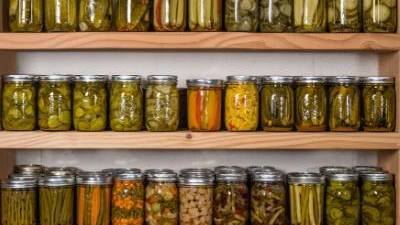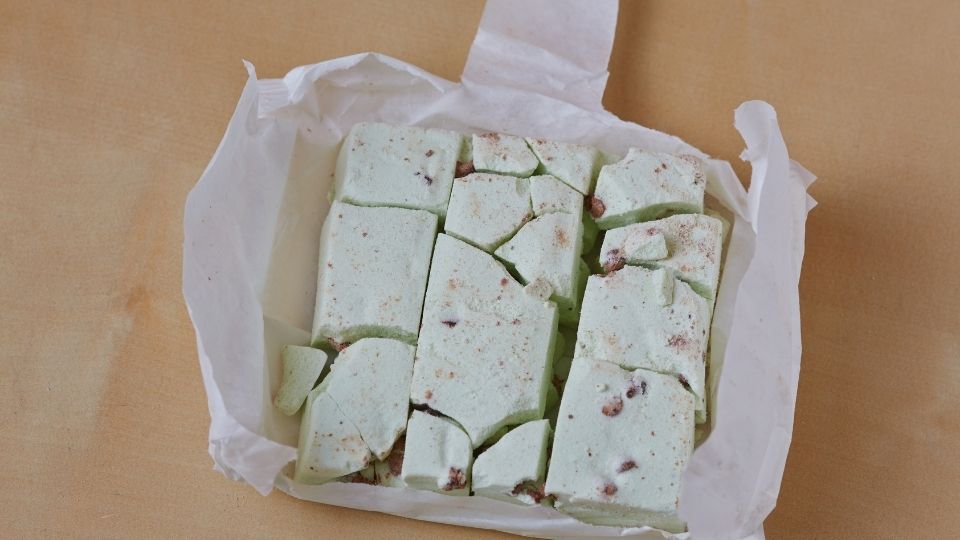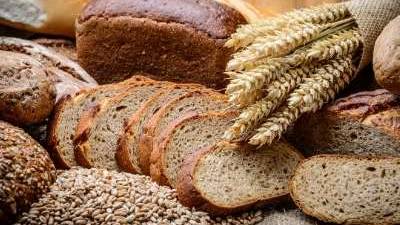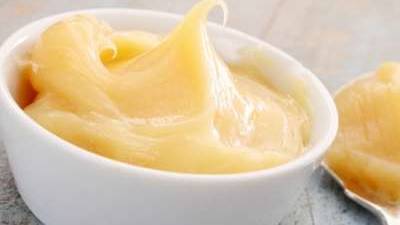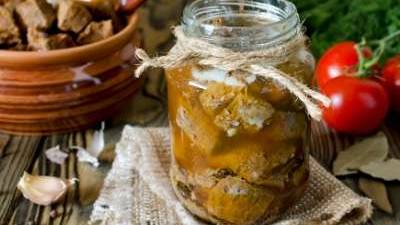How to Preserve Cherries
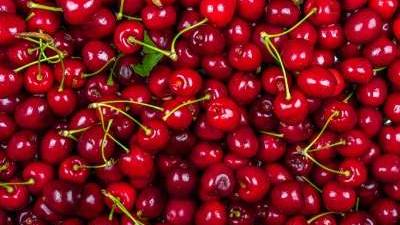
Did You Know?
- Cherries are grouped according to taste into sweet and sour types. Within each of these groups, cherries are classified on the basis of the color and firmness of their flesh.
- In general, the darker the cherry the sweeter its flavor, but there are exceptions such as yellow cherry varieties.
Utah Varieties
Sweet cherry varieties common to Utah include Bing, Stella, Van, and Rainier. Their firm juicy flesh is black-red in color. These varieties can be adapted many places in Utah, however they are not as cold hearty as sour cherries. If the area is prone to early spring frosts, developing fruit may be killed. The best sour cherry variety for Utah is Montmorency. It is hearty and can withstand more frost than sweet varieties because it blooms later in the spring. The bright red flesh has good flavor. It is the standard for pie cherries in home and commercial processing.
Season Availability
From Box Elder County south to Salt Lake County, sweet cherries ripen around June 10 to the 25. Utah and Juab County cherries are usually ready anytime during the last week of June to the 4th of July. Warmer climates such as Grand, Washington and parts of San Juan counties may see ripe fruit as early as the first of June to the 10th. Generally, sour cherries are ripe two weeks after sweet cherries ripen.
Selection and Preparation of Cherries
Choose freshly harvested cherries with a deep uniform color. Flesh should be firm and not bruised. Don’t delay preserving. Stem and wash thoroughly just before using, handling carefully to avoid bruising. If desired, pits may be removed. If pitted, drop cherries in a solution of 1 tsp. powdered ascorbic acid per gallon of water to prevent discoloration. Drain fruit before processing. If unpitted, prick skins on opposite sides with a clean needle to prevent splitting.
Yield
A lug weighs 25 pounds and yields 8 to 12 quarts. An average of 17 1/2 pounds makes a 7 quart canner load (approx. 2 1/2 pounds per quart); 11 pounds makes 9 pints. An average of 1 3/8 pounds makes 1 pint of frozen cherries.
Freezing
There are several ways to pack cherries for freezing. The best method selected will depend on how you want to use the frozen product.
A syrup pack would be best in an uncooked dessert; dry sugar or unsweetened would be best for cooking purposes. A loose cherry pack allows for individual cherries to be added to a fruit bowl, a smoothie, or eating as an icy treat on a hot summer day.
Sugar Pack
Mix 2/3 cup sugar per quart of sour cherries; or 1/3 cup sugar per quart of sweet cherries. To package, fill freezer containers to within 1/2 inch from top. If pint or quart freezer bags are used, fill to within 3/4 inches from the top. Squeeze out as much air as possible. Seal and label.
Unsweetened Pack
Without liquid or sweetening, pack cherries into containers to within 1/2 inch from top. If pint or quart freezer bags are used, fill to within 3/4 inches from the top. Squeeze out as much air as possible. Seal and label. The fruit may be sweetened at the time of serving.
Loose Cherry Pack
Spread whole sweet cherries in a single layer on shallow trays or cookie sheets and freeze. Remove and quickly package in labeled freezer bags or containers removing as much air as possible from containers. Seal and return promptly to freezer.
Syrup Pack
A light syrup is recommended for sweet cherries and medium syrup for sour cherries. Allow 1/2 to 2/3 cup of syrup for each pint of fruit.
Sugar Syrup Recipes
| Type of Syrup | Percent Syrup* | Cups of Sugar** | Cups of Water | Yield of Syrup in Cups |
|---|---|---|---|---|
| Very Light | 10% | 1/2 | 4 | 4 1/2 cups |
| Light | 20% | 1 | 4 | 4 3/4 cups |
| Medium | 30% | 1 3/4 | 4 | 5 cups |
| Heavy | 40% | 2 3/4 | 4 | 5 1/3 cups |
| Very Heavy | 50% | 4 | 4 | 6 cups |
* Approximate
** In general, up to one-fourth of the sugar may be replaced by corn syrup or mild-flavored honey. A larger proportion of corn syrup may be used if a very bland, light-colored typed is selected.
To make the syrup, dissolve sugar in lukewarm water, mixing until the solution is clear. Chill syrup before using.
For freezing, use just enough cold syrup to cover the prepared fruit after it has been placed in the container (about 1/2 to 2/3 cup of syrup per pint). To keep fruit under the syrup, place a small piece of crumpled parchment paper or other water-resistant wrapping material on top, and press fruit down into the syrup before sealing the container.
When using this table for canning, keep the syrup hot.
Canning
Wash jars. Prepare lids according to manufacturer’s directions. Stem and wash cherries. Remove pits if desired. If pitted, place cherries in water containing ascorbic acid to prevent stem-end discoloration (1 teaspoon of ascorbic acid or 3 grams in 1 gallon water). If canned unpitted, pricking skins on opposite sides with a clean needle will prevent splitting. Cherries may be canned with water, apple juice, white grape juice, or syrup. Whatever liquid is used needs to be boiling when poured over the cherries in the jar. If syrup is desired, select and prepare preferred type as directed above. Medium syrup works well for sweet cherries and heavy syrup for sour cherries.
Hot Pack
In a large saucepan add cherries and 1/2 cup water, juice, or syrup for each quart of drained fruit and bring to a boil. Fill jars with cherries and cooking liquid, leaving 1/2" headspace. Wipe the sealing edge of the jar with a clean, damp paper towel. Adjust lids and process in a boiling water bath or pressure canner as described below based on the altitude in your location.
Raw Pack
Add 1/2 cup hot water, juice, or syrup to each jar. Fill jars with drained cherries, shaking them down gently as filled. Add more hot liquid, leaving 1/2" headspace. Wipe the sealing edge of the jar with a clean, damp paper towel. Adjust lids and process in a boiling water bath or pressure canner as described below based on the altitude in your location.
Boiling Water Canner
To process in a boiling water canner, fill canner halfway with water and preheat to 180°F for hot packs or 140°F for raw packs. Load sealed jars onto the canner rack and lower with handles. Add water if needed to a level of 1 inch above jars. Cover. When water boils vigorously, lower heat to maintain a gentle boil and process for recommended time according to the following table.
| Process times at altitudes of: | |||||
|---|---|---|---|---|---|
| Style of Pack | Jar size | 0-1,000 ft | 1,001-3,000 ft | 3,001-6,000 ft | Above 6,000 ft |
| Hot | Pints Quarts |
15 min 20 min |
20 min 25 min |
20 min 30 min |
25 min 35 min |
| Raw | Pints or Quarts | 25 min | 30 min | 35 min | 40 min |
Pressure Canner
To process in a pressure canner, place the jar rack, 2-3 inches of water, and sealed jars in canner. Fasten lids, and heat canner on high setting. After exhausting steam 10 minutes, add weighted gauge or close petcock to pressurize the canner. Start timing the recommended process time when the desired pressure is reached.
| Canner gauge pressure at altitudes of: | ||||||||
|---|---|---|---|---|---|---|---|---|
| Dial gauge canner | Weighted gauge canner | |||||||
| Style of Pack | Jar size | Processing time | 0-2,000 ft (lbs) | 2,001-4,000 ft (lbs) | 4,001-6,000 ft (lbs) | 6,001 - 8,000 ft (lbs) | 0-1,000 ft (lbs) | Above 1,000 ft (lbs) |
Hot |
Pint Quart |
8 min 10 min |
6 6 |
7 7 |
8 8 |
9 9 |
5 5 |
10 10 |
| Raw | Pints or Quarts | 10 min | 6 | 7 | 8 | 9 | 5 | 10 |
Regulate heat to maintain a uniform pressure. When processing is complete, remove canner from heat. Air-cool canner until it is fully depressurized. Slowly remove weighted gauge or open petcock, wait 10 more minutes, then unfasten and carefully remove canner lid. Remove jars from canner with a jar lifter and place on a towel or rack. Do not retighten screw bands. Aircool jars 12 to 24 hours. Remove screw bands and check lid seals. The center of the lid should be indented and make a ping sound when tapped. Wash, dry, label, and store jar in a clean, cool, dark place. If lid failed to seal examine and replace jar if defective, use new lid, and reprocess as before within 24 hours.
Cherry Pie Filling
| Quantities of Ingredients Needed For: | ||
|---|---|---|
| 1 Quart | 7 Quart | |
| Fresh or thawed sour cherries | 3 1/3 cups | 6 quarts |
| Granulated sugar | 1 cup | 7 cups |
| Clear Jel ® | 1/4 cup + 1 Tbsp | 1 3/4 cups |
| Cold water | 1 1/3 cups | 9 1/3 cup |
| Bottled lemon juice | 1 Tbsp + 1 tsp | 1/2 cup |
| Cinnamon (optional) | 1/8 tsp | 1 tsp |
| Almond extract (optional) | 1/4 tsp | 2 tsp |
| Red food coloring (optional) | 6 drops | 1/4 tsp |
Quality
Select fresh, very ripe, and firm cherries. Unsweetened frozen cherries may be used. If sugar has been added, rinse it off while the fruit is still frozen.
Yield
1 quart or 7 quarts.
Procedure
Rinse and pit fresh cherries, and hold in cold water. To prevent stem end browning, use ascorbic acid solution (see instructions in Selection and Preparation section above). For fresh fruit, place 6 cups at a time in 1 gallon boiling water. Boil each batch 1 minute after the water returns to a boil. Drain but keep heated in a covered bowl or pot. Combine sugar and Clear Jel in a large saucepan and add water. If desired, add cinnamon, almond extract, and food coloring. Stir mixture and cook over medium high heat until mixture thickens and begins to bubble. Add lemon juice and boil 1 minute, stirring constantly. Fold in drained cherries immediately and fill jars with mixture without delay, leaving 1 inch headspace. Adjust lids and process immediately.
| Recommended Process Time for Cherry Pie Filling in a BOILING WATER canner | |||||
|---|---|---|---|---|---|
| Process times at altitudes of: | |||||
| Style of Pack | Jar size | 0-1,000 ft | 1,001-3,000 ft | 3,001-6,000 ft | Above 6,000 ft |
| Hot | Pints or quarts | 30 min | 35 min | 40 min | 45 min |
Drying
Wash fruit. Cut in half and remove pits. Cherries can be dried safely without any pretreatment, but pretreating may preserve the natural color and speed drying.
To pretreat: Ascorbic acid, available at drug stores, may be used. Prepare a solution of 1 to 2 1/2 teaspoons of pure ascorbic acid crystals to 1 quart cold water. Vitamin C tablets can be crushed and used (six 500 milligram tablets equal 1 teaspoon ascorbic acid). One cup treats about 5 quarts of cut cherries. Dip cut cherries in ascorbic acid solution. Soak for a few minutes, remove with a slotted spoon and drain well. Commercial antioxidant mixtures are not as concentrated as ascorbic acid but are more readily available in grocery stores. Arrange fruit on drying trays in single layers, pit cavity up. Cherries will dry in 24 to 36 hours in a dehydrator, in the sun from 12 hours to four or five days, and in the oven from six to 24 hours. Properly dried cherries are leathery and shriveled.
Cherry Raisins
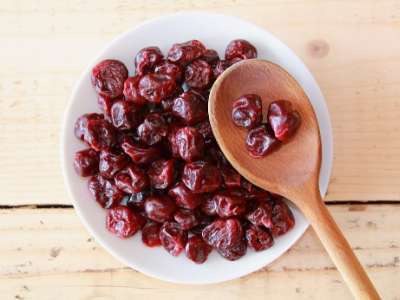
Wash and pit pie cherries. Heat 2 cups of cherries and 1/2 cup of sugar until the liquid boils for 1 minute. (Cherry-sugar mixture will form own juice.) With a slotted spoon, transfer cherries to a drying rack. Dry at 140-150/F until the moisture is decreased so that you have 80% solids or until the cherries are firm and rubbery to the touch. You will have best results if you base the drying on the final solids content of 80% and then either freeze the cherries or vacuum package to avoid mold growth.
To calculate desired final cherry weight for 80% solids:
- Weigh a container for fresh and dried cherries on a scale. Note weight.
- Fresh cherries. Add fresh cherries to container. Weigh. Subtract container weight.
- Calculate desired final weight. (Fresh cherry weight) times (.175) = desired weight of dried cherries.
- Add calculated desired final weight (#3 above) and weight of container (#1). When dried cherries reach this point, they are ready.
To vacuum pack the dried cherries, place in canning jars, attach lids loosely and place in a 325 degree oven for 15 minutes, remove jars and tighten lids. This process is not a canning process, but simply a way of creating a vacuum seal for a food that is already shelf stable due to the lack of moisture and the high acid fruit. Vacuum sealed food will last longer. Another alternative would be to add an oxidizer packet to the jar with the cherries and screw down the lid firmly. The oxidizer packet will create a vacuum seal. Some home vacuum sealers have an accessory to seal jars.
Making Fruit Leathers
Select ripe or slightly overripe fruit. Wash, pit, and drain well. Puree cherries in blender. Sweetener may be added in the form of corn syrup, honey, or sugar. Corn syrup or honey is best for long storage because it doesn’t crystallize. Sugar is good for immediate use or short storage. Sweeten to taste. Sweet cherries do not require as much added sweetening as tart varieties. Bring cherry puree to a boil. Line a plate or cookie sheet with edges with plastic wrap. Smooth out the wrinkles. Pour the pureed fruit onto the cookie sheet in a 1/4 inch thick layer. Spread evenly.
To dry in an oven -
Place the tray on the center rack in an oven at lowest setting and prop oven door slightly open. Approximate drying time may be up to 18 hours. Watch the fruit carefully to prevent burning.
To dry in a dehydrator -
Use specially designed dehydrator trays or plastic trays. Line with plastic wrap. Pour pureed fruit on the trays in a 1/8 inch thick layer. Spread evenly. Approximate drying time is 6-8 hours. Leather that is dry can be easily pulled from the plastic wrap. Fruit leather can be left on plastic or pulled from plastic wrap while still warm. Cool and re-wrap in plastic if needed.
Jam
Fresh cherries can be used with commercially prepared powdered or liquid pectins to make jam. The order of combining ingredients depends on the type of pectin used. Complete directions for jam are provided with packaged pectin. Be sure to use hot canning jars, self-sealing two-piece lids, and a boiling water bath with the correct processing time for your altitude. If your altitude is less than 1000 feet, sterilize empty jars by boiling 10 minutes. It is not necessary to sterilize jars when the processing time will be 10 minutes or longer.
| Recommended Process Time for Cherry Jam in a BOILING WATER canner | |||||
|---|---|---|---|---|---|
| Process times at altitudes of: | |||||
| Style of Pack | Jar size | 0-1,000 ft | 1,001-6,000 ft | 6,001-8,000 ft | |
| Hot | Half-pints or pints | 5 min | 10 min | 15 min | |
Labeling and Storage
Fresh Cherries
Store ripe cherries in the refrigerator uncovered and use within 3 to 5 days. Don’t wash until ready to eat since moisture can cause them to spoil more rapidly or dry thoroughly to avoid molding.
Canned Cherries
If lids are tightly vacuum sealed after processing, remove the screw bands, wash the lid and jar to remove food residue; then rinse and dry jars. Label and date the jars and store them in a clean, cool, dark, dry place. For best quality, don’t keep canned cherries more than 24 months at 40°F or 18 months at 70°F or 9 months at 90°F.
Frozen Cherries
Label and date the packages. Properly packaged and frozen, the fruit should maintain high quality for approximately one year.
Dried Cherries
Pack cooled, dried foods in small amounts in glass jars or in moisture and vapor-proof freezer containers, boxes or bags. Store in a cool, dry, dark place. Vacuum packaged dried cherries can be held for 48 months at 40°F, 24 months at 70°F or 12 months at 90°F.
Jams
Before storing, remove screw bands and check seals. Label jars with the name and date. Store in a cool, dry, dark, clean area. The shorter the storage time, the better the eating quality of the product. Flavor and quality may begin to decrease within a few months, although most jellied products should keep for at least one year.
Nutritional Information
| Calories | Fiber (grams) |
Vitamin C mg |
Vitamin A Iu |
Folate mg |
Iron mg |
|
|---|---|---|---|---|---|---|
| Sour cherries, raw 1/2 c. | 38 | 1.2 | 8 | 944 | 6.2 | .25 |
| Sour cherries, canned, light syrup, 1/2 c. | 94 | 1.0 | 2.5 | 915 | 10 | 1.7 |
| Sweet cherries, raw, 1/2 c. | 37 | 1.2 | 4.1 | 37 | 2.3 | .21 |
| Sweet cherries, light syrup, 1/2 c. | 84 | 1.9 | 4.7 | 196 | 5 | .45 |
| Sweet cherries, frozen, 1/2 c. | 115 | 2.7 | 1.3 | 245 | 5 | .45 |
References
- Ball Blue Book. The Complete Guide to Home Canning and Freezing, 1995. Alltrista Corporation. Muncie, Indiana
- Bowes, Anna DePlanter, Church, Charles, Church, Helen Nichols, Pennington, Carmella Genene, & Pennington, Jean A. T. Bowes & Church’s Food Value of Portions Commonly Used. 1998. Lippincott-Raven Publishers. Philadelphia, Pennsylvania.
- Brennand, Charlotte. 1994. Home Drying of Food. (FN330) Utah State University Extension. Logan, Utah.
- Complete Guide to Home Canning (Agriculture Information Bulletin No. 539). 1988. USDA & Extension Service.
- Section 5. Subsistence. Department of Defense 4145.19-R-1, 1979 USDA Food Composition,
- USDA Nutrient Data Laboratory, http://www.nal.usda.gov/fnic/foodcomp/Data/index.html
Authors
Ellen Serfustini
Related Research


